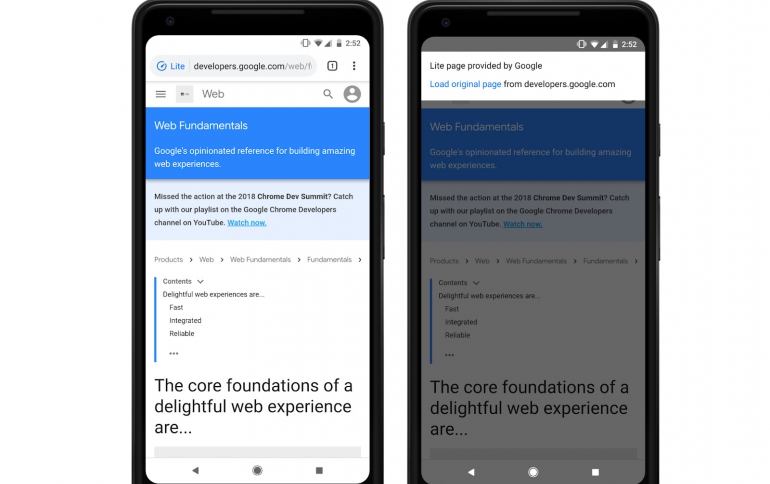
Google Chrome Lite Pages Speed Up HTTPS sites on Slow Connections
Google announced today a new Chrome feature named Lite Pages that will improve page loading times for HTTPS pages on Chrome for Android.
Lite Pages will be part of Chrome for Android's existing "Data Saver" feature, which until now only supported speeding up HTTP pages.
Google uses built-in optimizations and its huge servers to improve page loading. The specific optimization techniques depend on what region the user is in and on how the developer wrote and served that particular page. When Chrome optimizes an HTTPS page, only the URL is shared with Google; other information – cookies, login information, and personalized page content – is not shared with Google.
These optimizations are only applied when the network’s effective connection type is “2G” or “slow-2G,” or when Chrome estimates the page load will take more than 5 seconds to reach first contentful paint given current network conditions and device capabilities. Chrome applies these criteria equally to all pages. For all but the slowest sites, Google expects this to affect a very small percentage of page loads.
To show users when a page has been optimized, Chrome now shows in the URL bar that a Lite version of the page is being displayed. Users can tap this indicator to see more information and to access an option to load the original version of the page. Chrome automatically disables Lite pages on a per-site or per-user basis when it detects that users frequently opt to load the original page.
To try out Lite pages on Chrome for Android, enable Data Saver from the settings menu and load a page on a very slow network.
If you’re using a faster network, set #force-effective-connection-type to any 2G option at chrome://flags. To prevent automatic disabling of the feature as a result of users opting out, enable #ignore-previews-blocklist.
Lite Pages, Google says, can improve page loading times by up to 90 percent on slow connections where they'd usually take tens of seconds, if not minutes.
Google says that when Lite Pages kicks in, Chrome will only replace static content such as images and text, but it will not touch other sensitive data, which will still be negotiated directly only between the user's Chrome browser and the destination sites.
Webmasters can prevent Chrome from loading their sites into a Lite Pages mode and stripping out ads by declaring certain parameters in the site's headers.





















